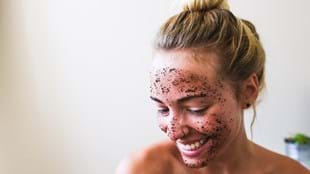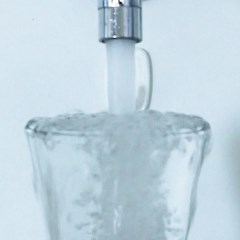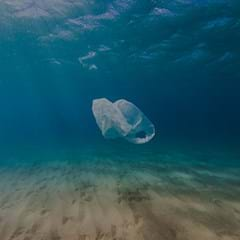Nothing is simple anymore, right? All you want to do is take a well-earned shower after a workout and you find yourself worrying about the planet.
Yes, you may have heard the news – many of the things we use to wash ourselves with are dangerous, at least to the environment. More specifically, those cleansers and body scrubs that contain microbeads, those tiny, spherical bits of plastic that provide an abrasive texture, are dangerous. They might help slough off your dead skin cells, but the microbeads are washed down the plug hole, float out through our drainage systems and end up in the ocean, to be eaten or absorbed by marine animals.
That’s no good, but what does that mean for those of us higher up the food chain?
There’s no good scientific evidence to prove that the microbeads pose any threat to human health when passed up the food chain by fish ... yet. But we do know shellfish are efficient at filtering tiny pieces of plastic out of the water, so how do you feel about your oysters being fattened on something someone used to wash their face? Seriously, they can’t be good for the marine animals either – there’s good evidence that feeding on tiny bits of plastic can trick them into thinking they’re full, causing them to starve as a result. This is likely to have implications higher up the oceanic food chain, one way or another.
What’s the difference between microbeads and microplastic?
Microbeads are one form of microplastic, those tiny bits of plastic less than 5mm in diameter found in the sea and now recognized as a serious environmental problem. To be fair, cosmetic and personal care products are responsible for only one to four percent of the microplastic that ends up in the sea, with most of it coming from the fragmentation of larger pieces of plastic. It’s still plastic though; a study conducted by the United Nations Environment Program (UNEP) points out that microbeads and other plastic ingredients are present in different products at different percentages, ranging from less than one percent to more than 90 percent, but a typical exfoliating shower gel can contain as much plastic as the plastic packaging it comes in. Unlike the packaging, microbeads can’t be recycled.
Why pick on cosmetic products when they’re responsible for a fraction of the problem?
Good question, but probably because the inclusion and promotion of microbeads as an exfoliating ingredient is a recent and novel development, and one that could be easily done without. There’s no good scientific evidence to show that lotions containing microbeads are any more effective at exfoliating than those that don’t, or ones that use biodegradable alternatives such as apricot seeds and ground shells.
However, it’s now apparent that microplastics are often also used in deodorant, shampoos, conditioners, lipstick, hair coloring products, shaving cream, sunscreen, insect repellent, anti-wrinkle creams, moisturizers, hair spray, facial masks, baby care products, eyeshadow, mascara … the list goes on.
As the aforementioned UNEP notes, the uses of these plastic polymers clearly “go beyond the well-known scrubbing effect of microbeads”. They also used as a bulking agent; as a viscosity controlling agent (to make a product thicker or lighter); as a film-forming agent (to make a product stick to skin); for optical blurring effects (such as the plastic beads designed to nestle into wrinkles to reflect light and make the wrinkles look smaller); to control the release of certain ingredients; and to extend shelf-life by protecting degradable active ingredients from bacteria.
What are we doing about this?
The cosmetics industry has started to phase out microplastics voluntarily. The UK is planning to introduce a ban on their use at the end of 2017, and a number of countries are lobbying the European Union to follow suit. Australia has opted for voluntary phase-out of their use, and if that doesn’t work, it plans to implement a ban in 2018. A ban on microbeads used in some personal care products took effect in the US from July 1, under the Microbeads-Free Waters Act, and Taiwan is working towards a ban by July 2018. However, most of these initiatives (both the voluntary and the legislative) refer to “rinse-off” exfoliating microbeads, not all the other microplastic ingredients being used in cosmetics.
In the meantime, what’s the best way to avoid microbeads?
The Beat the Microbead campaign has developed an app that can be easily downloaded and used to scan the barcode of different products, so consumers can find out whether a product contains any of the five plastic ingredients typically used in cosmetics; Polyethylene (PE), Polyethylene Terephthalate (PET), Polypropylene (PP), Polymethylmethacrylate (PMMA) and Nylon. It also has a very useful country-by-country product list, to help consumers identify which products contain microplastic ingredients.
Unfortunately, since the campaign launched in 2012, scientists have found more than 60 microplastics currently used by the personal care and cosmetics industry. Beat the Microbead now recommends consumers look for products that have a ‘Look for the Zero: Zero Plastic Inside’ logo, which can be used by manufacturers whose formulations really are plastic free. It also lists some of those that are on its website.
Do that and you should be ready for that guilt-free shower.
If you want more tried, tested and true news from the leading edge of health and fitness sign up to get Fit Planet insights and advice straight to your inbox.
Follow the freshest thinking @fitplanetmag.







